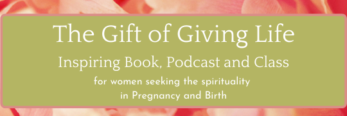Has anyone else found this treasure? I had been eyeing this new book, The First Fifty Years of Relief Society, and recently found out that there are portions of it already online with plans for the entire book to be available online within the year (source). The timing of the release of this book is perfect with March being Women in History month. It is another source to glean from our heritage of Relief Society sisters. I love learning from my sisters of the past. It points us to our future. Heather has blogged about the history of midwives within the LDS church , in this post, “Midwifery as a Calling.” I recommend reading it if you haven’t yet. I found this excerpt from this new book that reaches a little deeper about the beginnings of organizing health care for women in the early church,
The hardships of the westward trek and isolated frontier settlement brought health concerns, including distinctly female concerns, to the forefront. Midwives and other women began attending meetings of the Council of Health with male practitioners when the group was formed in 1849.6 Some women, however, were uncomfortable discussing medical matters in the Council of Health, which caused “a slackness of attendence of the females, which was suposed to be caused by there being present male members.” As a result, the Female Council of Health was organized by July 1851.7 Midwife Phoebe Angell, mother of Brigham Young’s wife Mary Ann Angell, was designated president of the women’s council, and she chose two midwives as counselors. The women’s council met about twice a month, initially in Angell’s home. As membership expanded, the group later held some meetings in the newly erected tabernacle on the south end of the temple block.8 On November 13, 1852, the council selected one woman each from most of the city’s nineteen wards “to look after the poor.”9 After Angell died in November 1854, her counselor Martha “Patty” Sessions became president of the Female Council of Health, though by then Sessions was also serving as president of the newly organized Relief Society of Salt Lake City’s Sixteenth Ward.10
This council was separate from the reorganization of the Relief Society and took place before Brigham Young asked sisters to “get a classical education and then get a degree for Medicine” in 1873 (Daughters in My Kingdom, 54). This Female Council of Health was a precursor to the trainings that Dr. Ellis Shipp established for sisters in the Salt Lake Valley in the 1880s. Midwife Patty Sessions often refers to attending these meetings in her journal (Mormon Midwife: The 1846-1888 Diaries of Patty Sessions). Richard L. Jensen offers insight on what these meetings were like:
They heard lectures by local physicians, “discussed faith and herbs in healing, attempted to design more healthful female fashions, spoke and sang in tongues, and enjoyed a social and spiritual interchange” (see Richard L. Jensen, “Forgotten Relief Societies, 1844-67,” Dialogue 16, no.1 [Spring 1883]:107).
Our circumstances today are not exactly the same as our sisters of the past. This council was organized to fill a specific need of their time. I feel that it does reflect a desire of the priesthood leaders of the early church to meet the needs of women. They knew there were needs specific to women that needed women. They wanted women to be a part of their councils and when they became aware that the women needed their own forum to better meet each other’s needs they formed the Female Council of Health.
I do feel that God does still care greatly for the health of women. We have recently witnessed a rediscovery of the divine nature of pregnancy and childbirth. Many women have felt called to the work in one way or another. I felt called to it over 12 years ago. The spirit compelled me to become a childbirth educator. It has been a great treasure and blessing to me through the years. I have come to a place where I am pondering my next steps forward. I have loved being a childbirth educator and have found myself doing more and more doula work instead of classes. And the promptings keep coming that I need to move forward with midwifery and health care training. I have pondered different paths and at times feel confused about which one to take. Studying the history of health care within our church is helping me find the path that God has prepared for me. I don’t know all the details of it yet. It is different than what I expected but it is nonetheless His and inspired and I’m choosing to go forward and let faith instead of fear lead me there.

